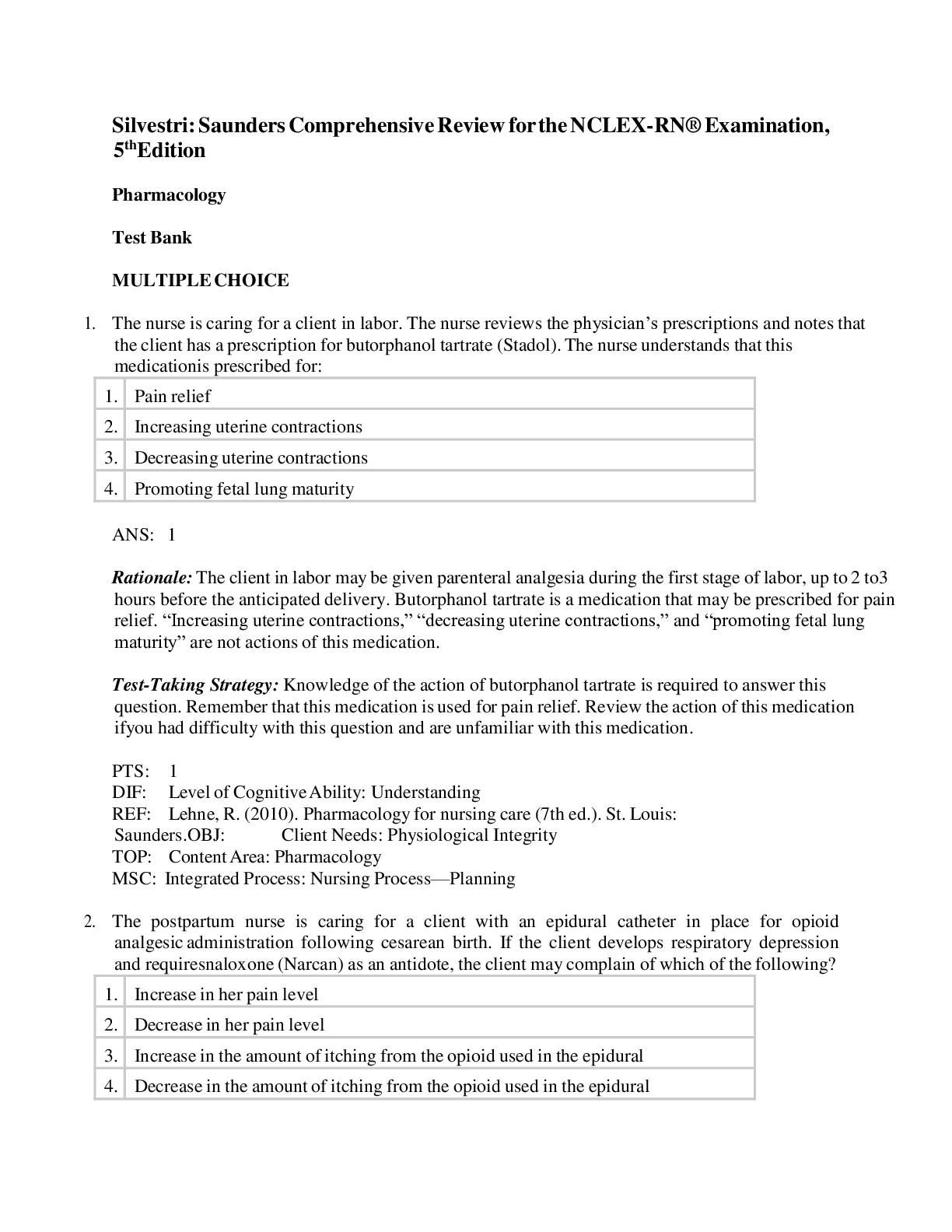*NURSING > TEST BANK > Test bank-Silvestri-Saunders Comprehensive Review for the NCLEX-RN® Examination, 5th Edition (All)
Test bank-Silvestri-Saunders Comprehensive Review for the NCLEX-RN® Examination, 5th Edition
Document Content and Description Below
1. The nurse is caring for a client in labor. The nurse reviews the physician’s prescriptions and notes that the client has a prescription for butorphanol tartrate (Stadol). The nurse understands th... at this medication is prescribed for: 1. Pain relief 2. Increasing uterine contractions 3. Decreasing uterine contractions 4. Promoting fetal lung maturity ANS: 1 Rationale: The client in labor may be given parenteral analgesia during the first stage of labor, up to 2 to 3 hours before the anticipated delivery. Butorphanol tartrate is a medication that may be prescribed for pain relief. “Increasing uterine contractions,” “decreasing uterine contractions,” and “promoting fetal lung maturity” are not actions of this medication. Test-Taking Strategy: Knowledge of the action of butorphanol tartrate is required to answer this question. Remember that this medication is used for pain relief. Review the action of this medication if you had difficulty with this question and are unfamiliar with this medication. PTS: 1 DIF: Level of Cognitive Ability: Understanding REF: Lehne, R. (2010). Pharmacology for nursing care (7th ed.). St. Louis: Saunders. OBJ: Client Needs: Physiological Integrity TOP: Content Area: Pharmacology MSC: Integrated Process: Nursing Process—Planning 2. The postpartum nurse is caring for a client with an epidural catheter in place for opioid analgesic administration following cesarean birth. If the client develops respiratory depression and requires naloxone (Narcan) as an antidote, the client may complain of which of the following? 1. Increase in her pain level 2. Decrease in her pain level 3. Increase in the amount of itching from the opioid used in the epidural 4. Decrease in the amount of itching from the opioid used in the epidural ANS: 1 Rationale: Remember that opioids are used for epidural analgesia. Naloxone is an opioid antagonist, which reverses the effects of opioids. If it is given, the client may complain of an increase in her pain level. Therefore “decrease in her pain level,” “increase in the amount of itching from the opioid used in the epidural,” and “decrease in the amount of itching from the opioid used in the epidural” are incorrect. Test-Taking Strategy: To answer this question accurately, you must know that opioid analgesics are the medications used with epidural analgesia to relieve pain. Therefore if naloxone is administered as an antidote for an opioid analgesic, the client’s pain will increase. Review the effects of naloxone if this question was difficult. PTS: 1 DIF: Level of Cognitive Ability: Understanding REF: Lehne, R. (2010). Pharmacology for nursing care (7th ed.). St. Louis: Saunders. OBJ: Client Needs: Physiological Integrity TOP: Content Area: Pharmacology MSC: Integrated Process: Nursing Process—Assessment 3. A client experiencing preterm labor at the twenty-ninth week of gestation has been admitted to the hospital. The client has a prescription to receive betamethasone (Celestone). The nurse understands that the medication will do which of the following? 1. Prevent spontaneous delivery. 2. Stop the uterine contractions. 3. Promote maturation of the fetal lungs. 4. Accelerate the growth rate of the fetus. ANS: 3 Rationale: Betamethasone (Celestone) is classified as an anti-inflammatory and corticosteroid. It increases the surfactant level and lung maturity in the fetus, which reduces the incidence of respiratory distress syndrome. Delivery must be delayed for at least 48 hours after administration of betamethasone to allow time for the lungs of the fetus to mature. Test-Taking Strategy: Options that are comparable or alike are not likely to be correct. With this in mind, eliminate “prevent spontaneous delivery” and “stop the uterine contractions.” Note the strategic words “twenty-ninth week of gestation.” Specific knowledge about the medication and knowledge of the problems encountered by premature infants will assist in answering this question. Review the action of this medication if this question was difficult. PTS: 1 DIF: Level of Cognitive Ability: Understanding REF: McKinney, E., James, S., Murray, S., & Ashwill, J. (2009). Maternal-child nursing (3rd ed.). St. Louis: Saunders. OBJ: Client Needs: Physiological Integrity TOP: Content Area: Pharmacology MSC: Integrated Process: Nursing Process—Planning 4. A client with preeclampsia is receiving magnesium sulfate. The nurse assesses the client closely for which sign of magnesium toxicity CONTINUED......... [Show More]
Last updated: 1 year ago
Preview 1 out of 277 pages

Reviews( 0 )
Document information
Connected school, study & course
About the document
Uploaded On
Apr 22, 2022
Number of pages
277
Written in
Additional information
This document has been written for:
Uploaded
Apr 22, 2022
Downloads
0
Views
81


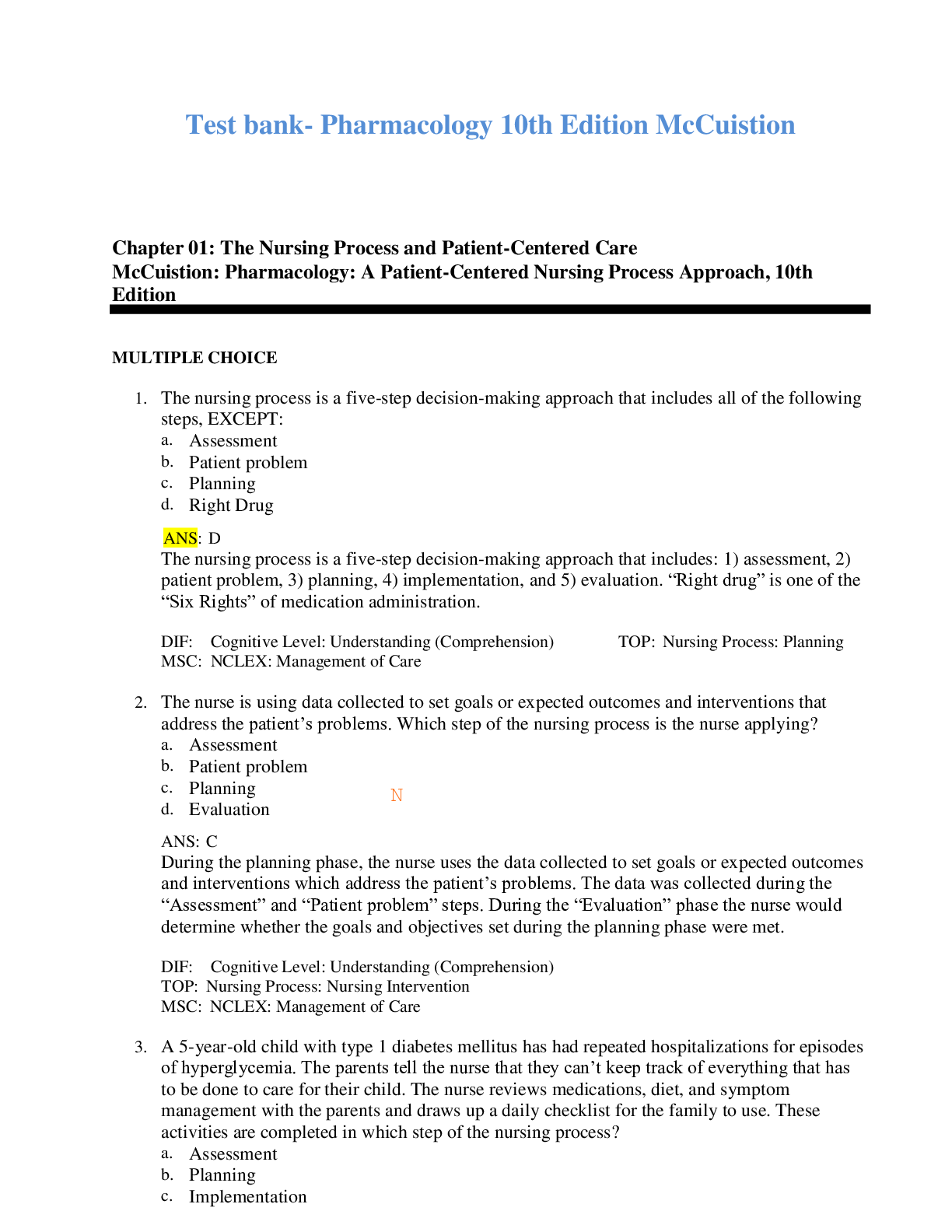
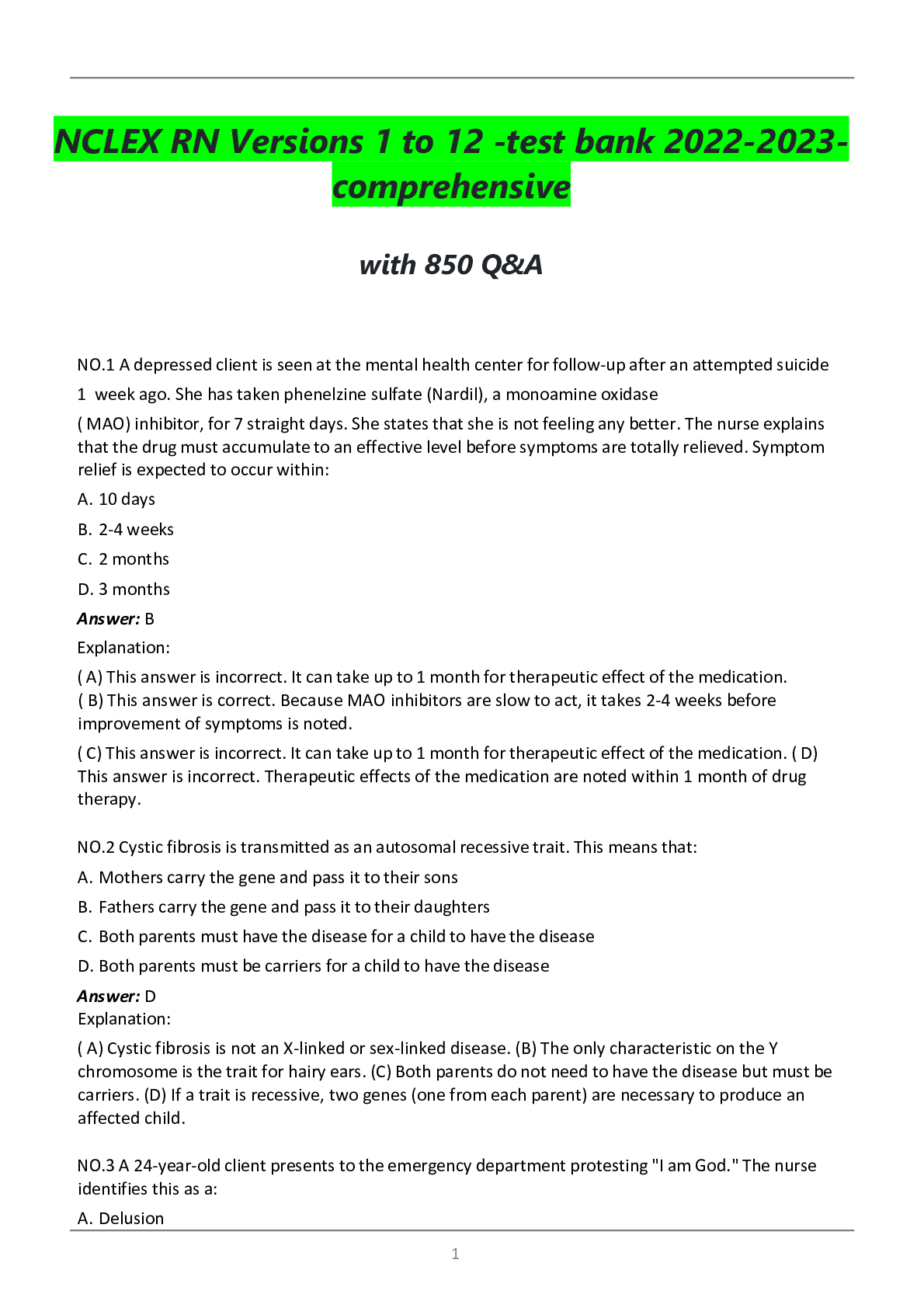

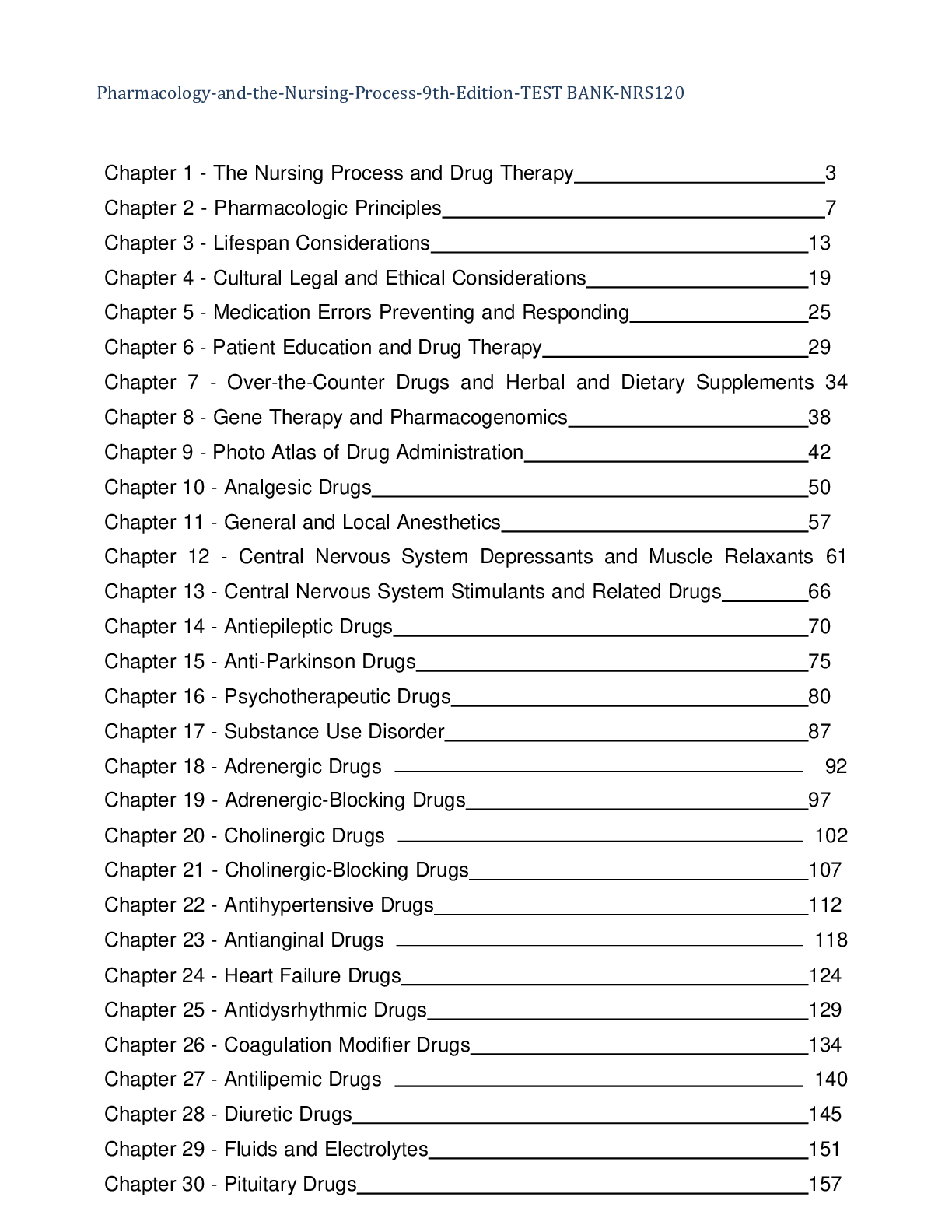



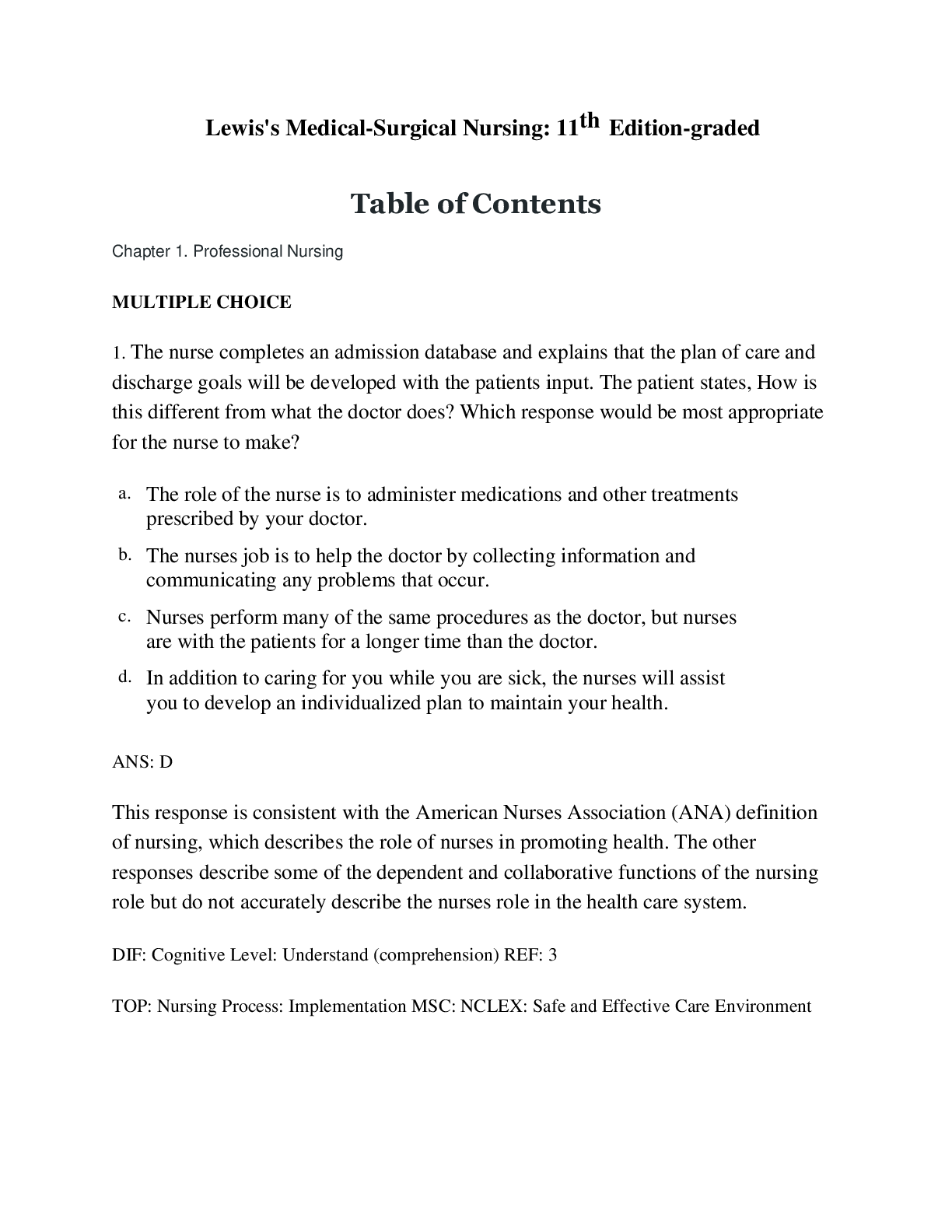

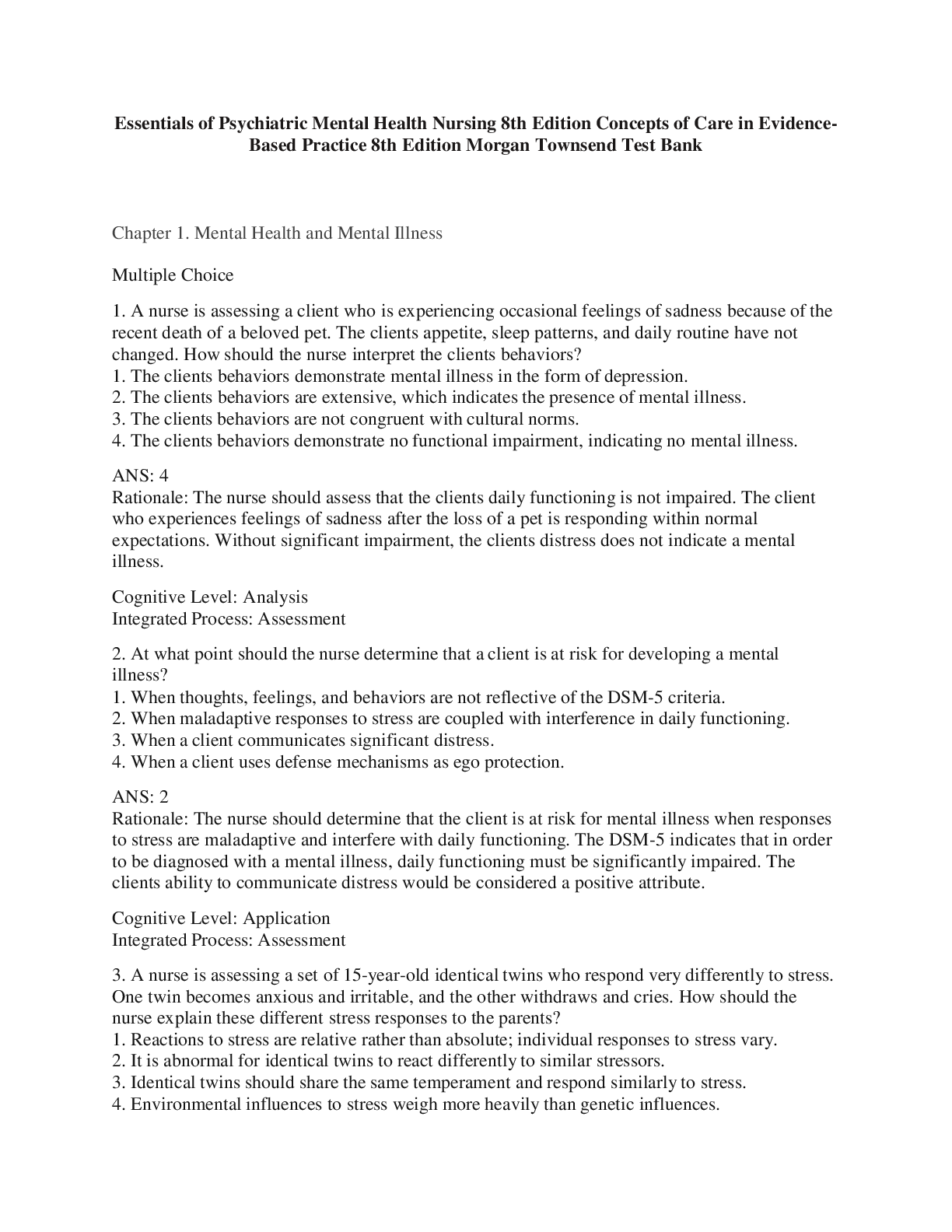

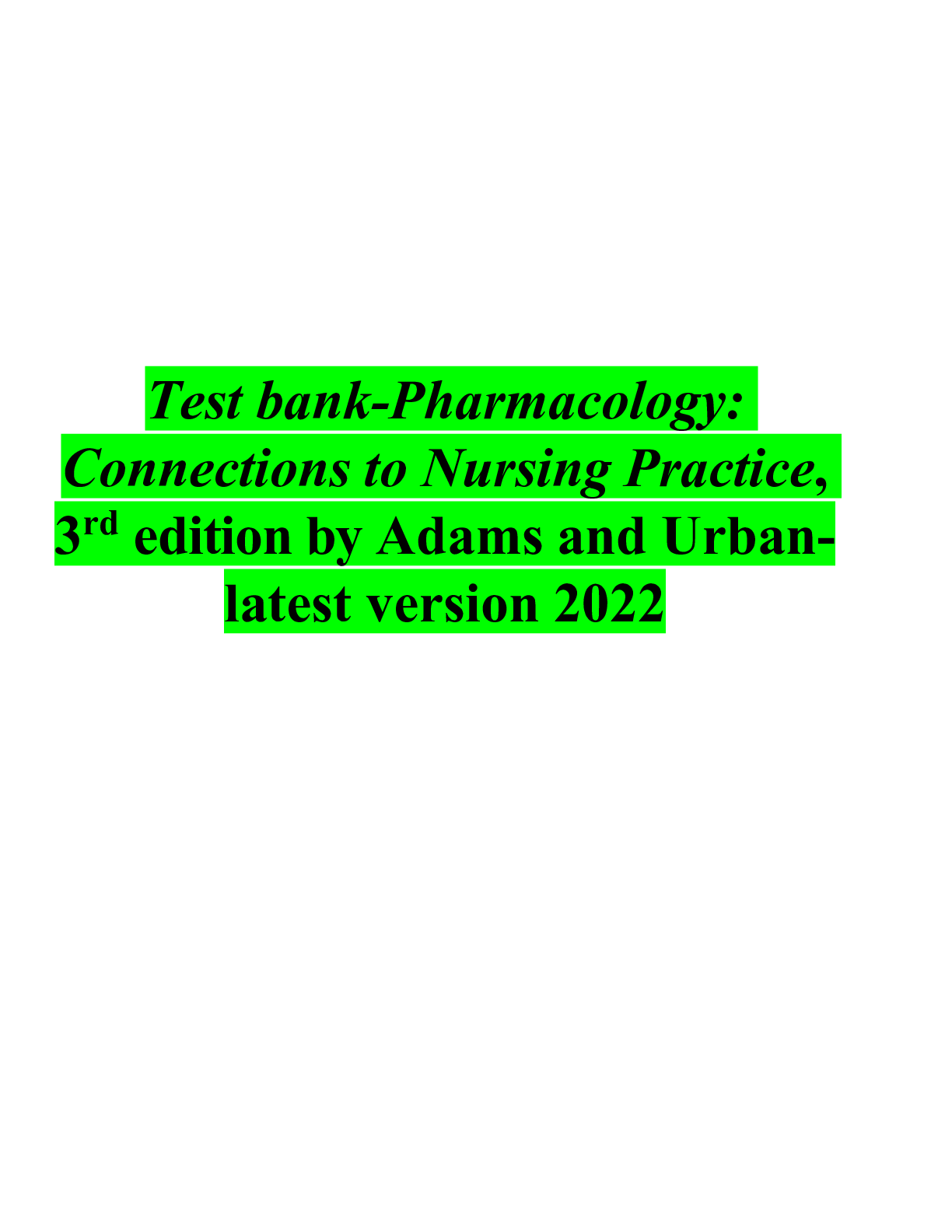


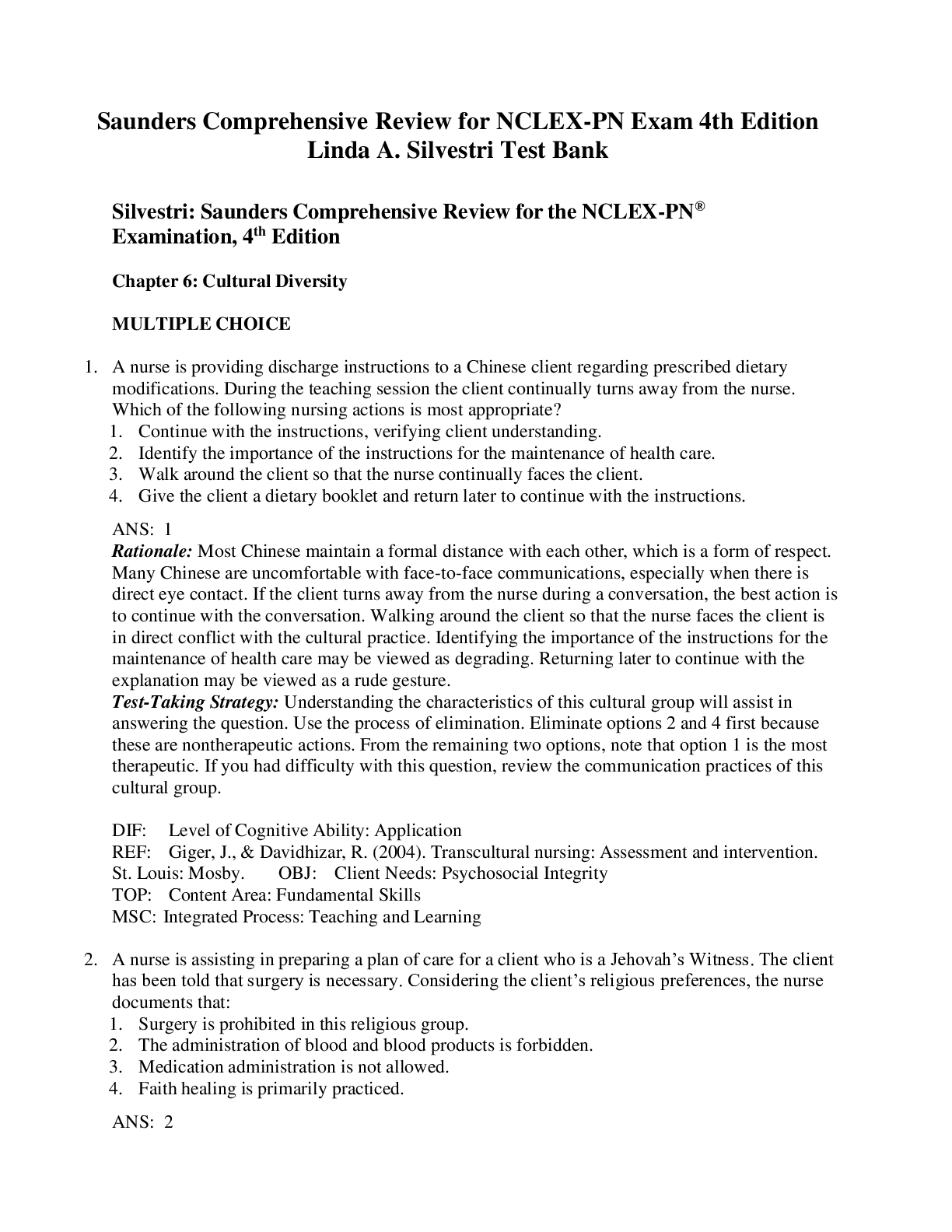
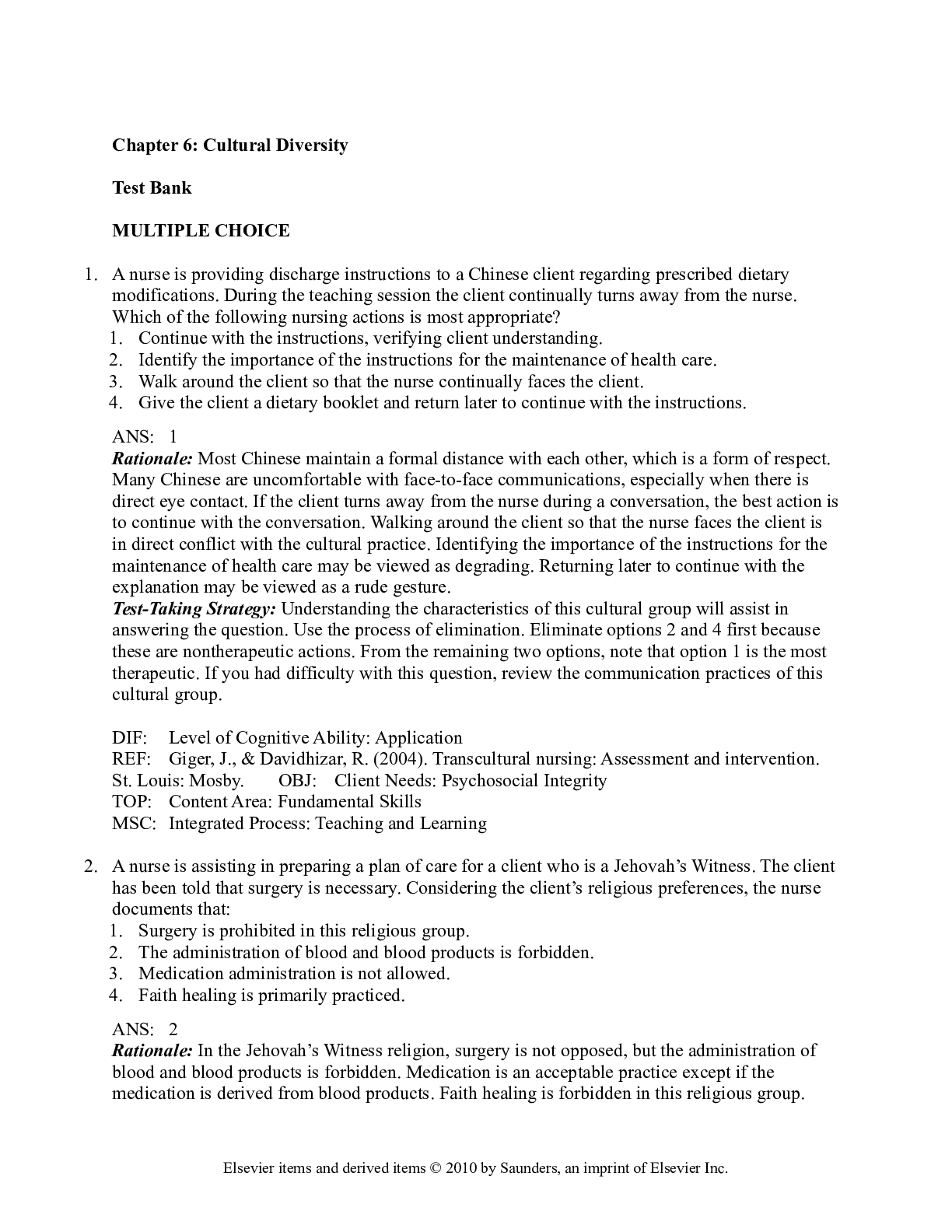
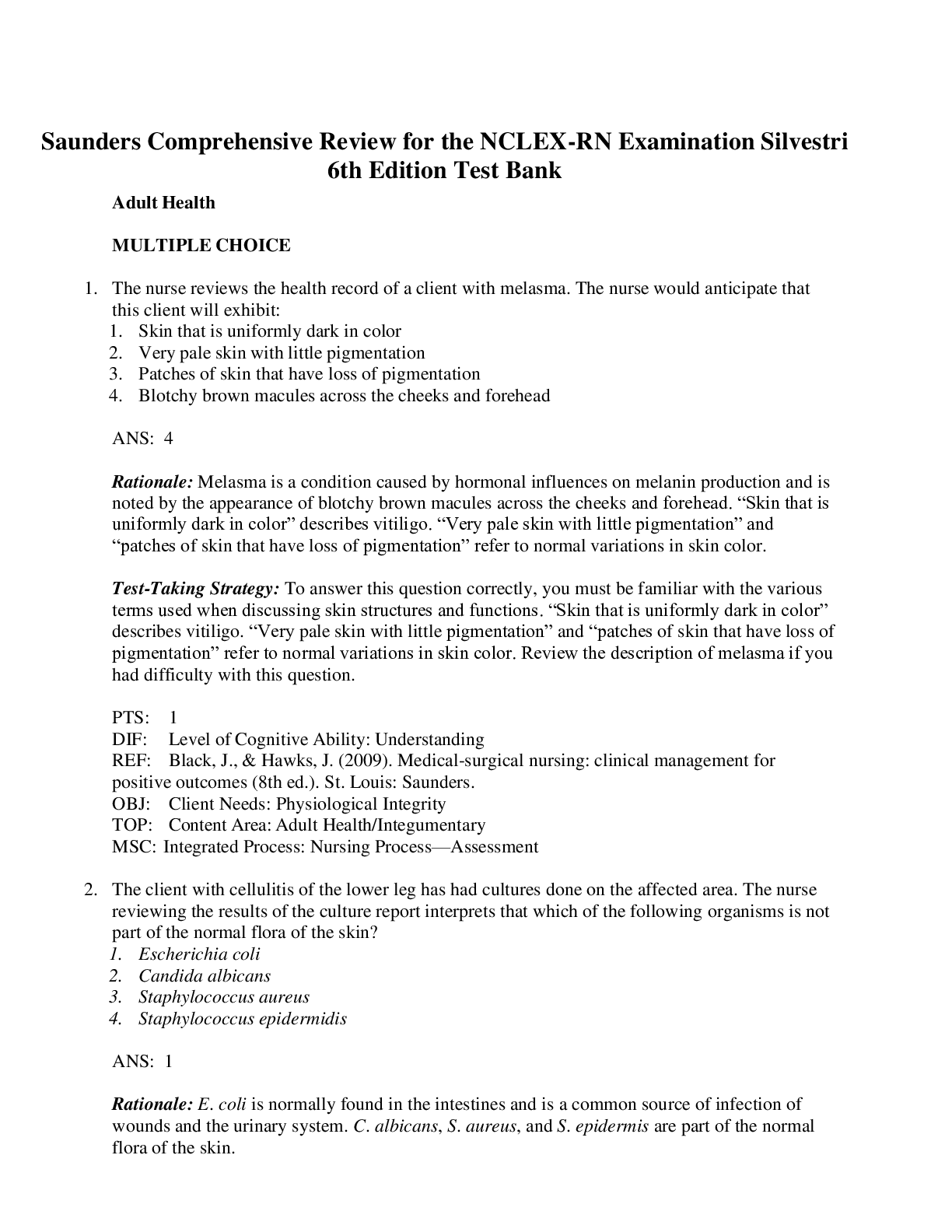
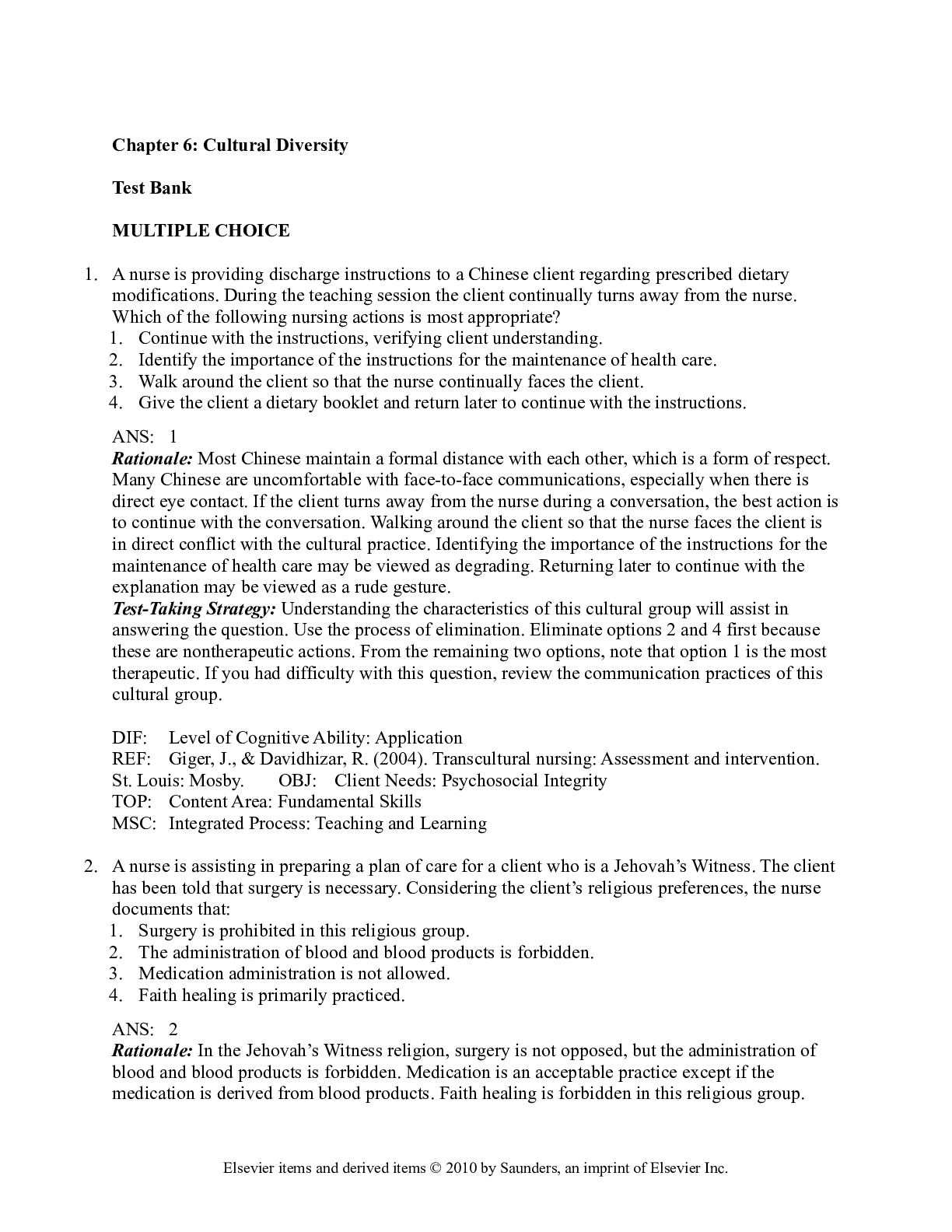

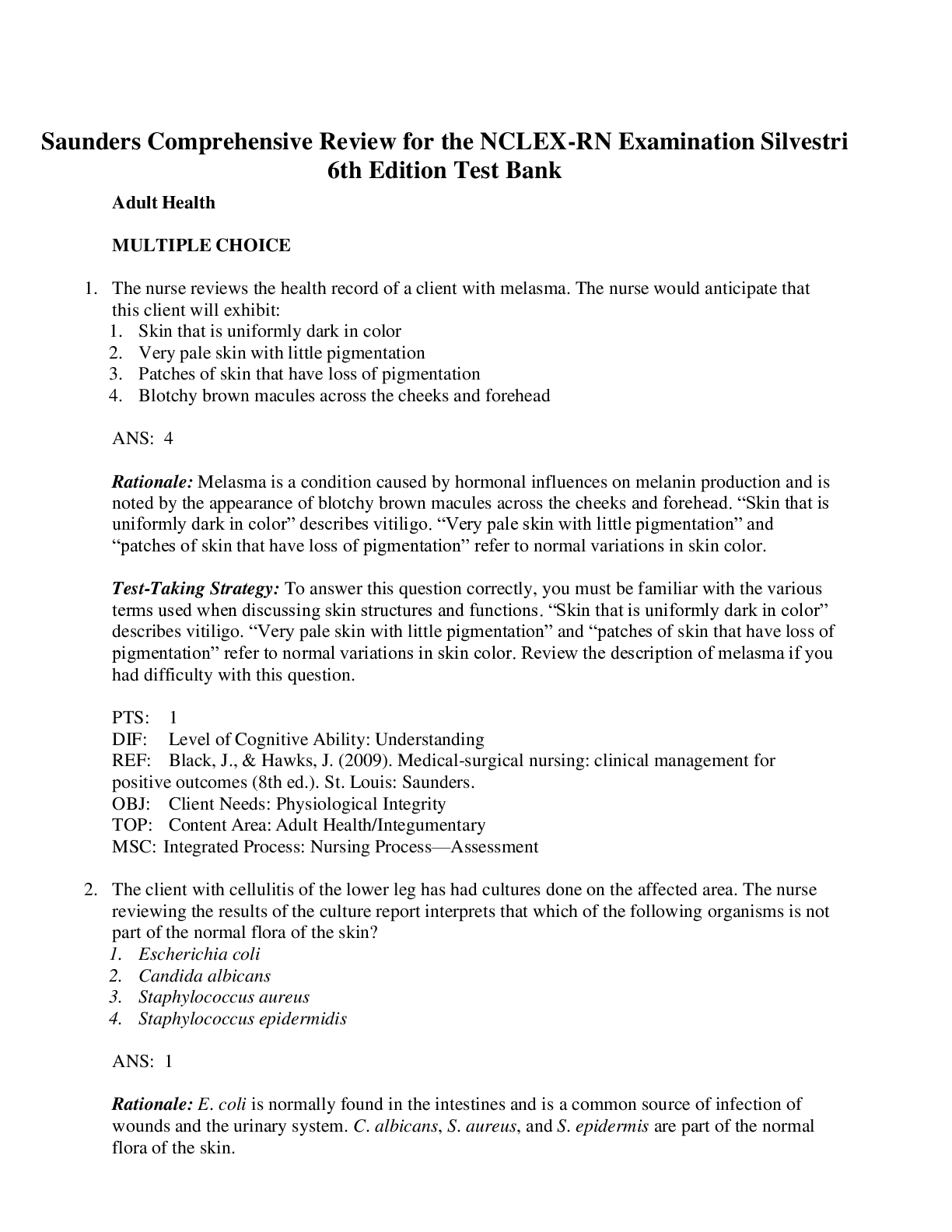
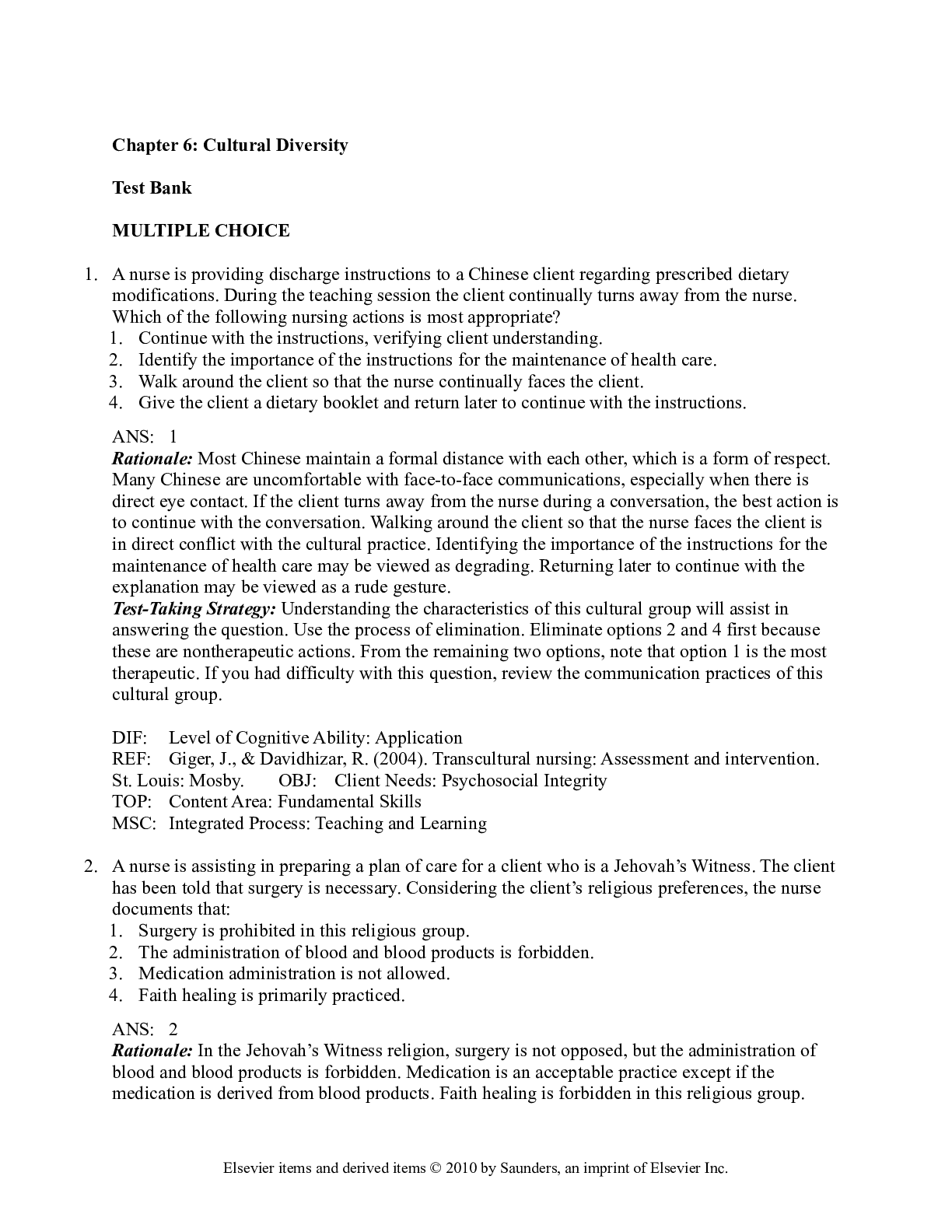
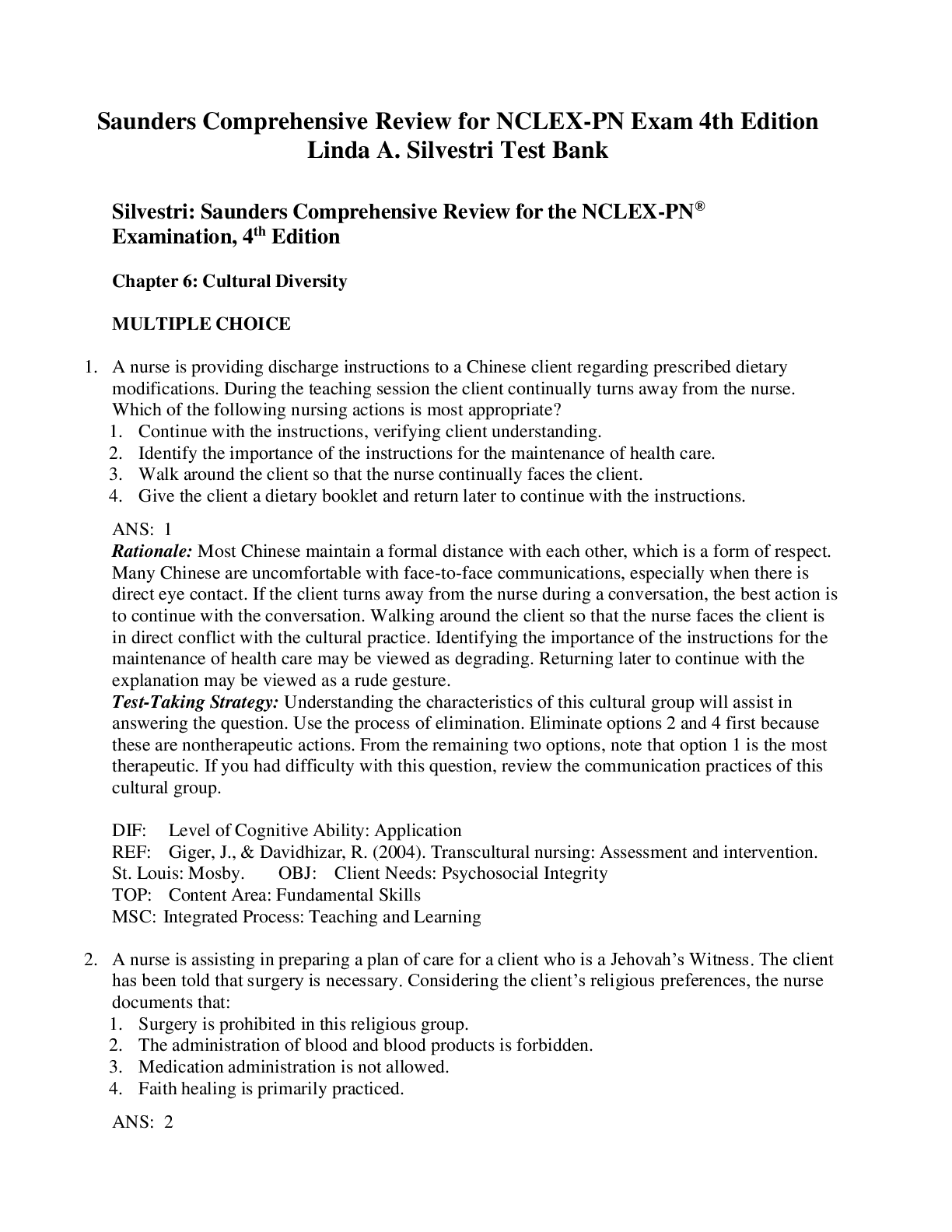


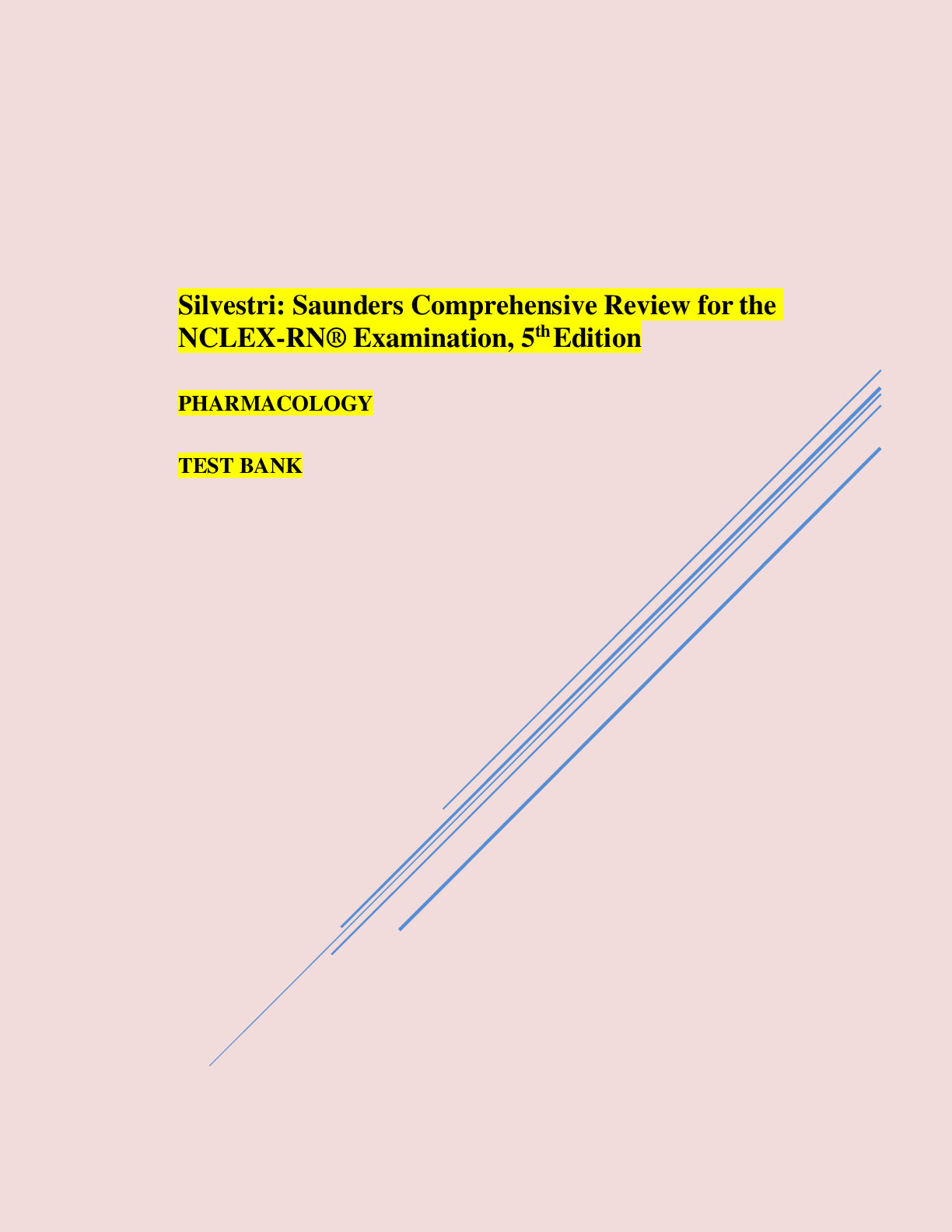


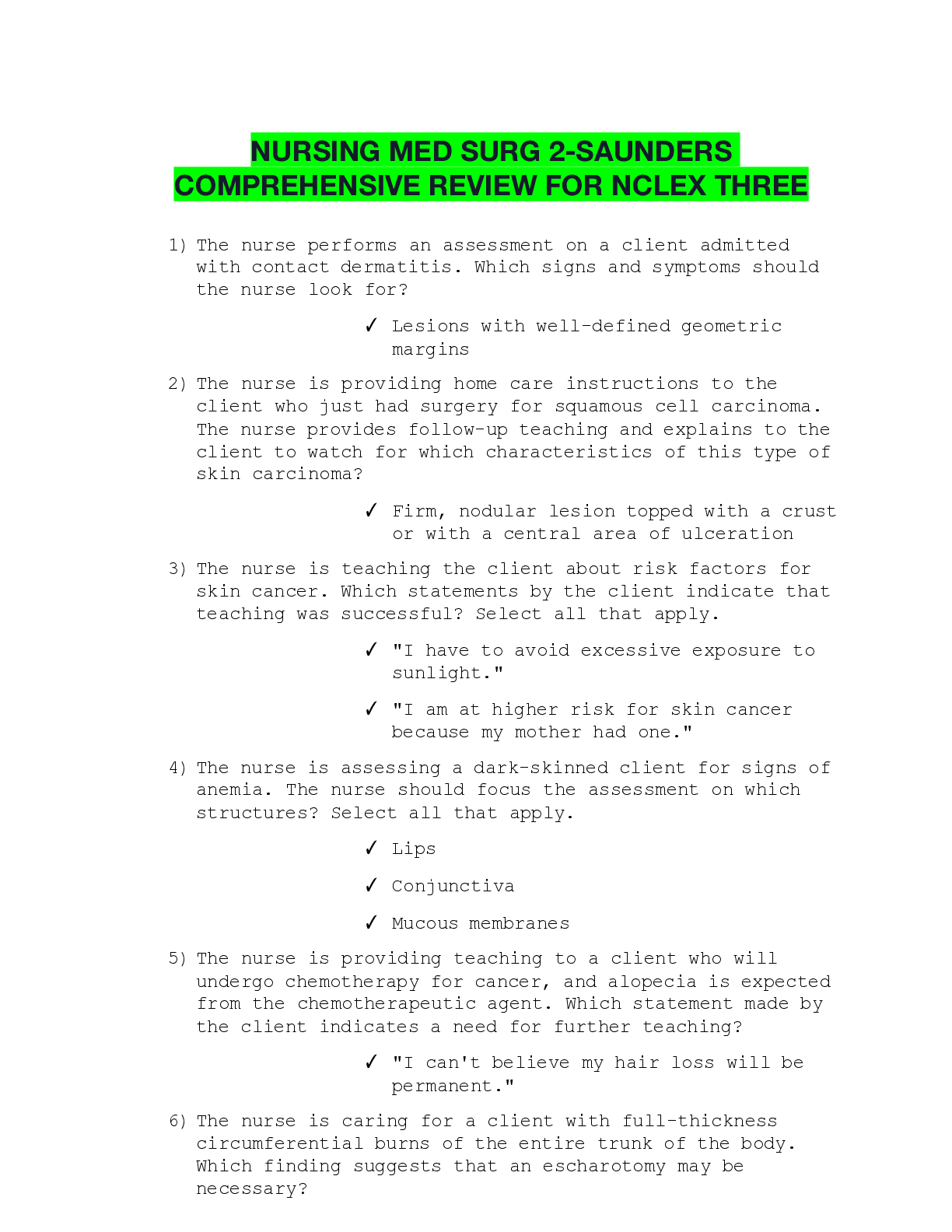
 5TH EDITION E.png)
